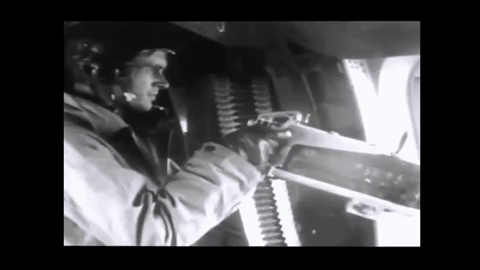Massive Destruction From The Air
 |
| A B-25 bomber in action during World War II. |
Here we have collected some aerial combat footage from the Pacific Theater of Operations during World War II. The US Army Air Force went to great pains to document their operations during the war. Gun-camera footage is usually brief because the cameras only operate while the guns are firing. Naturally, pilots were interested in conserving their ammunition for further encounters and thus usually fired the guns only for short bursts.
During the closing days of World War II, the US Army Air Force had free reign over Japan. Long-range P-51 Mustang escort fighters and other advanced planes could linger over Japanese industry and military installations and pound them at their leisure.
Kamikaze attacks were a severe threat in 1944 and 1945. These were one-way trips for the pilot, determined to hit a US Navy warship as his last act of bravery for the Emperor.
The "para-frag" bomb was invented by George Kenney in the 1920s. Conditions were ideal for its use in the Southwest Pacific Theater of Operations. The para frag was a relatively small bomb (24 pounds or 11 kilograms) designed to shatter into 1" (25mm) fragments upon its impact. The bombs dropped slowly toward their targets under a small parachute.
Japanese airpower lost its punch as the war progressed. The experienced Japanese pilots from early in the war could not be replaced by men of similar quality, so the battles became increasingly one-sided.
Of course, the downside of this strategy was that the destroyers serving far away from the rest of the fleet were vulnerable. Many of these destroyers were sunk with large loss of life. Their sacrifice protected the more valuable capital ships supporting invasions.
 |
| American M-40 para-frag bombs fall toward a Japanese Ki-21 bomber, Buru Island, 1944. |
2021
No comments:
Post a Comment